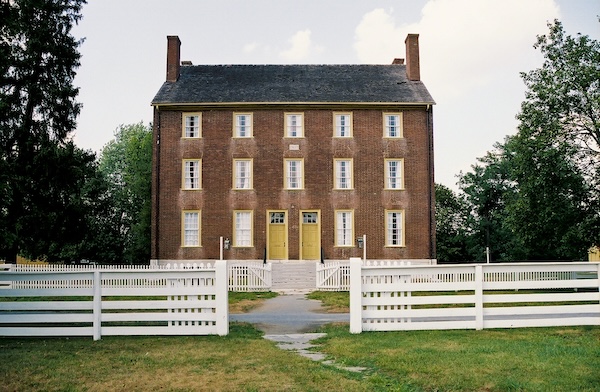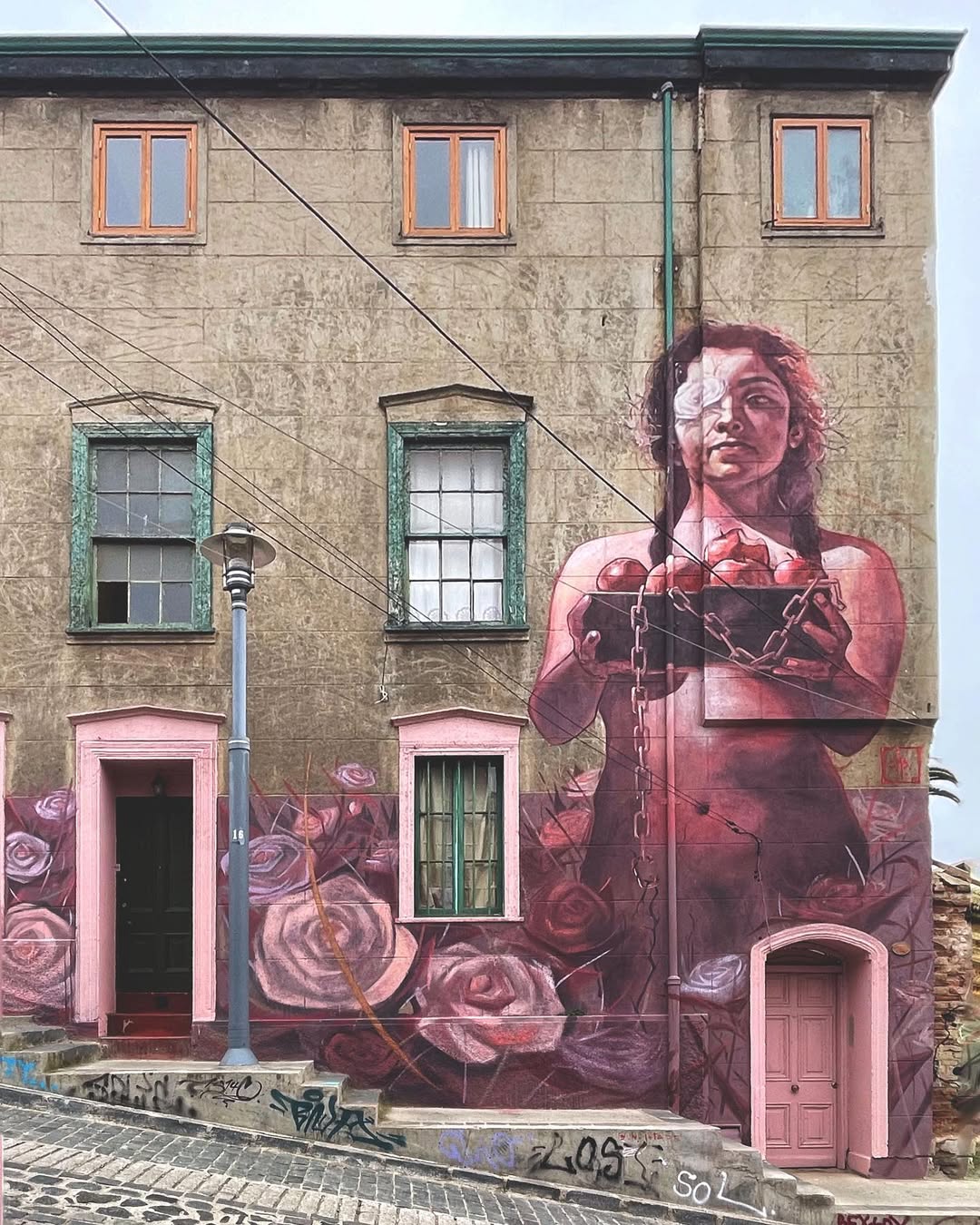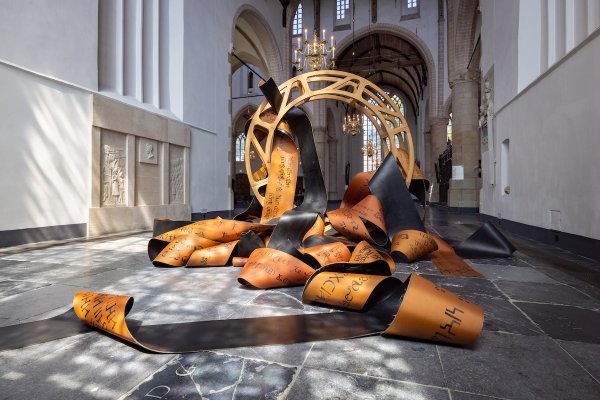
Resilience
Although George Frederic Watts (1817-1904) was a nineteenth-century English painter, he stood defiantly against Impressionism and can’t really be called a Pre-Raphaelite either. However, he was into symbolism and the rediscovery of the narrative in art. While Watts was not interested in conventional religion, he found it very important to express his Christian perspective of the eternal and absolute in his art. Watts was convinced that his art was capable of making a concrete difference. He hoped that his paintings could speak directly to his culture and actively provide an alternative for people, hence he called his paintings “thoughts and attempts to embody visionary ideas”.
Watts called one of his most famous paintings ‘Hope’ (1885/1886). At first glance one could be inclined to call this painting ‘Despair’. A dim canvas shows a bowed and stricken woman. A secretive figure cowers in the twilight over a broken lyre with only one remaining, twisted string. And yet, although the hope may seem dim and delicate, it is actually indestructible.
We see the woman hunched and seemingly depleted, sitting on a rusty world. Watts chose to paint this world brown and not green, with no sign of growth. The woman seems smothered by her feelings of depression, as if life is choking her. Even her clothes are smothering her as they stick to her.
Watts painted a lonely woman, her time filled with empty hours and empty thoughts. Perhaps she is bitter and resentful, stuck in a static mess. Or overwhelmed by fears and anxieties, she may no longer be able to look ahead of herself. Swept away by apathy, a kind of emotional death may be overtaking her, her emotions blunt. Or overcome by soul-destroying mental conflict, there may be nothing to hold her back from slipping into a vague abyss. It seems that in this painting of hope, all these hopeless emotions are portrayed. But that isn’t where the painting stops. It’s as though Watts is saying to us, What if? What if she did sense her spirit piercing through the enveloping gloom? What if she did feel it transcend the hopeless, meaningless world? What if from somewhere deep down she could hear the victorious proclamation “Yes!”, in answer to her question about the existence of an ultimate purpose?
The woman is clearly still clinging onto something. She hasn’t fully folded, nor given up all hope. G.K. Chesterton in his book on The Art of G.F. Watts said,
In the centre of the curved back of Watts’ Hope we might almost think of ourselves as a bowed figure in the twilight, holding to her breast something damaged, but undestroyed… Though Watts calls this tremendous reality Hope, we may call it other things. Call it faith, call it vitality, call it a will to live, call it the immortality of man.
The woman is clinging onto a lyre. Most lyres have at least 4 strings, if not 7 or 10, but this lyre has only one string left. The woman is hanging on for dear life to the very last string. Yet even though the lyre has only one string, it can still sing. G.K. Chesterton describes the string as
always stretched to snapping, and yet never snaps… The queerest and most delicate thing in us, the most fragile, the most fantastic, is in truth the backbone and indestructible… Faith is the perpetually defeated thing, which survives all its conquerors.
Notice that this last string is external to the woman, it is not inside her. It is not her own inner strength that gives her the ability to sing. Clinging onto the one lyre string, the woman struggles to hear its faint music. And have you noticed another element, even further removed from her at the top of the canvas, a very faint star that could draw her to hope too? This star shows us that this work is not just about a symbol, but about the reality behind the symbol. The star reminds me of The Lord of the Rings, when J.R.R. Tolkien in Return of the King describes Sam seeing a similar star:
There, peeping among the cloud-wrack above a dark tor high up in the mountains, Sam saw a white star twinkle for a while. The beauty of it smote his heart, as he looked up out of the forsaken land, and hope returned to him. For like a shaft, clear and cold, the thought pierced him that in the end the Shadow was only a small and passing thing: there was light and high beauty forever beyond its reach.
Watts portrays the woman as blindfolded. Why? Being blindfolded would seem to depict that you cannot see. Lacking hope is about not being able to see ahead. And yet this is a picture about hope. It reminds me of the text Hebrews 11:1 which links having hope with faith: “Faith is being sure of what we hope for and certain of what we do not see.” The bandaged head is perhaps not one only of despair, but of having the faith to put our hope in someone, somebody beyond ourselves, whom one may not initially see but who is truly there.
**********
G.F Watts: Hope, 1885/1886, oil on canvas, Collection Watts Gallery, Compton, Surrey, UK.
George Frederic Watts, OM, RA (1817-1904) was an English Victorian painter and sculptor associated with the Symbolist movement. He said, "I paint ideas, not things." Watts became famous in his lifetime for his allegorical works, such as Hope and Love and Life. These paintings were intended to form part of an epic symbolic cycle called the House of Life, in which the emotions and aspirations of life would all be represented in a universal symbolic language. Watts was born in Marylebone, London on the birthday of George Frederic Handel (after whom he was named), to the second wife of a poor piano-maker. Delicate in health and with his mother dying while he was still young, he was home-schooled by his father in a conservative interpretation of Christianity as well as in the classics. The former put him off conventional religion for life, while the latter was a continual influence on his art. He showed artistic promise very early, enrolling as a student at the Royal Academy at the age of 18. He first exhibited at the Academy in 1837, while also beginning a portraiture career. When visiting Italy Watts began producing landscapes and was inspired by Michelangelo's Sistine Chapel and Giotto's Scrovegni Chapel. Leaving Florence in April 1847 for what was intended to be a brief return to London, he ended up staying. Back in Britain he was unable to obtain a building in which to carry out his plan of a grand fresco based on his Italian experiences. In consequence most of his major works are conventional oil paintings, some of which were intended as studies for the House of Life.
Edith Reitsema has worked at English L’Abri since 2002. She grew up in South Africa where her parents were missionaries to the Zulu people. She holds a B.A. in Music and an Honours Degree in Modern English Literature from Potchefstroom University in South Africa, a M.A. in Theology from Covenant Seminary and a graduate degree in Philosophy from the Free University in the Netherlands. She was one of the translators of The Complete Works of Hans Rookmaaker. Edith is a public speaker on a variety of topics that deal with the relationship between Christianity, contemporary culture and the arts.
ArtWay Visual Meditation 16 February 2020
%20(1).png)












